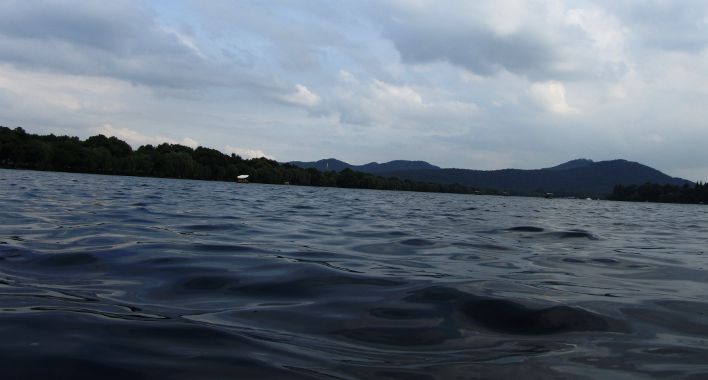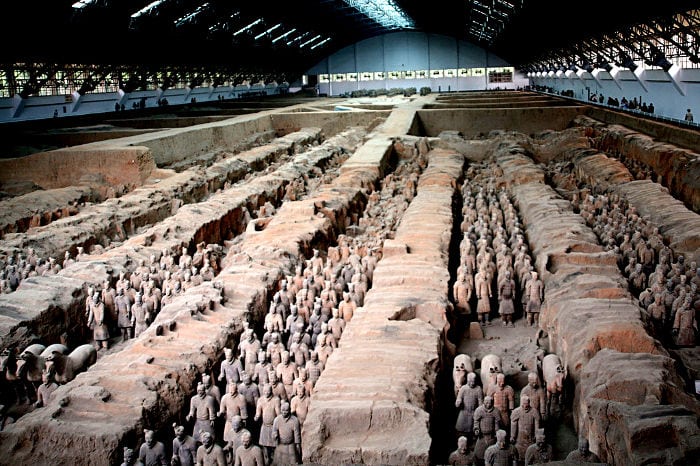His life
Cao Wenxuan, 曹文轩, one of the most-read Chinese children literature authors in China and among the most widely translated in the world, was born in the village of Longgang 龙港村 near the town of Yancheng 盐城, in Jiangsu Province, 江苏, in 1954.
The family’s economic situation wasn’t the greatest, but that didn’t stop him from immediately coming into contact with culture and books. In fact he took full advantage of the small school library where his father worked (as school principal) to read Soviet children’s literature and modern Chinese literature.
In those years, the concept of literature for children was relatively new in China and the first children’s works from foreign authors began to appear along with Chinese titles for the little ones.
His adolescence was marked by strong political tensions that culminated in the Cultural Revolution (1966-1976), in which the majority of schools were closed and young Cao traveled the country as part of the Dachuanlian, 大串联, a movement in which young activists were encouraged to spread the message of the revolution. Cao Wenxuan, however did not take part in the violent episodes since he was too young to do so (12-13 years old).
Later, Cao returned to Jiangsu and enrolled at the University of Beijing (Beijing Daxue 北京大学 where he graduated and where he still is a professor of Chinese literature and language, besides being director of doctorate thesis at the same university, director of the contemporary literature department, member of the Lu Xun Literature Institute, the Committee for children’s literature and vice president of the Beijing Writer’s Association.
Cao Wenxuan appears on the Chinese literary scene around the Eighties, setting his literary production in rural China during the Fifties and Sixties (the years of his childhood) and, for this reason, many of the stories he told were inspired by real things with particular references to stories of absolute poverty.
One of the principle characteristics of his works is being able to transform the experiences and memories of his childhood into literary creations, as the difficult life conditions he was forced to grow up in are firmly rooted in his works.
Since the early days, Cao Wenxuan’s literary opinions are on the front line in Chinese children’s literature, still guiding the evolution of the concept of literature for children and young adults. His works have always captured and understood the emotional needs of youngsters, and as evidence he was repeatedly awarded the Bing Xin Award for children’s literature and the Song Qingling Award for youth literature, prestigious literary awards for Chinese children’s fiction.
In 1985, Cao Wenxuan proposed that children’s writers are the formers of future national character and, in 2005, slightly modifying his original vision for children’s literature, offered a new definition: “The mission of children’s literature consists in establishing a good spiritual base for all humanity”.
All this has allowed him to achieve, by unanimous ruling, the Hans Christian Andersen 2016 Award during the Children’s Book Fair of Bologna, held between April 4 through 7, 2016. Repeating the words of the IBBY (International Board on Books for Young People, the entity responsible for assigning the Andersen Award), Cao is described as a very committed writer whose difficult childhood has influenced his writing.
This has allowed him to win such international recognition and not only seek the unique characteristic of this background that is China in his stories and feelings, in its people and landscapes, but also his ability to address the concept of suffering through the eyes of children. Everything is recounted with a stylistic ability that is the author’s trademark, allowing him to be immediately recognizable within the international literary field.
His most representative works
草房子 (Cao fangzi) “The Grass House” – 1997
This is one of Cao Wenxuan’s first big novels, where rural Chinese society during the Seventies is presented through the eyes of Sang Sang, 桑桑, the principal’s son. Through his experiences it tells the story of friendship, love, pain and the growth of the village’s inhabitants in a web of autobiographical pieces (the author himself is son of a principal and many of the places mentioned were inspired by places where the author grew up). This work was so successful that in 2000 it became a film directed by Xu Geng, 徐耿.
根鸟 (Genniao) “The Bird” – 1999
In this novel the story tells through dreams and reality the affairs of a country boy called Genniao 根鸟. The protagonist, who lives in a peaceful rural village with his father, is determined to reach his dreams which fly over immense grasslands, deserts, mountains, villages and little cities, alluding in this way to the tribulations that a young man encounters during his growth. Every scene seems bizarre and confusing, but at the same time bears a strong symbolism.
细米 (Ximi) “The Thin Rice” – 2003
This work tells the story of Ximi, 细米, a boy who lives in a village on the banks of a stream. One day a sailboat reaches the shores of the stream, bringing with it a group of girls that seem as if they’ve come directly from Heaven. From that moment on the reader is presented the course of the main character Ximi’s growth and maturation, between fields of grain, windmills, reed beds and rivers that give life to the idyllic world created by the author with his novels.
红瓦黑瓦 (Hongwa heiwa) “Red Tiles and Black Tiles” – 2005
This piece could be considered the continuation of The School with the Straw Roof. Set in Campodilino, the novel poetically describes village life through the eyes of a middle school student, accurately recording the gradual process of growth made up of highs and lows, boys and girls.
青铜葵花 (Qingtong kuihua) “Bronze and Sunflower” – 2005
Another of Cao Wenxuan’s great masterpieces with two million copies, in which the lives of a mute country boy, Bronze, and a city orphan girl, Sunflower, are woven during the years of the Cultural Revolution. The two protagonists end up living in the same family, creating an affectionate bond of dependence on one another that will move both children and adults.
大王书 (Dawangshu) “Dawang Tome” – 2007
This series of books represents perhaps Cao Wenxuan’s greatest undertaking since it took a good eight years to write. It’s sort of a big fantasy novel that embraces all sorts of themes and detaches for certain verses from the typical themes and objectives of its literary production. The main character is a young shepherd that, with the help of the people, leads an entire army to conquer four mountains where the spirit, language, hearing and sight of the people reside, restoring vitality to the world around it.
丁丁当当 (Dingding Dangdang) “Dingding and Dangdang” – 2012
This is a series of seven books that have as protagonists two children affected with Down Syndrome, Dingding and Dangdang, who come from the rural village of Linenfield (Youmadi, 油麻地), the same village where The Grass House is set. One day Dangdang, at seven years old (Dingding is five years older than his little brother), gets lost at a crowded market. This alarms his older brother, who the day after decides to go looking for his little brother.
At this point the adventures begin for the two protagonists through mines, mountains, a flea circus, cities, rivers and fields, where they encounter all sorts of people, both good and bad. This piece was chosen by the IBBY in 2015 as one of the “50 best children’s literary works for children with disabilities”.




Thank you, for opening the door for me to Chinese stories. It is the experience of others that can inspire some of us when they are a true accounting. Good presentation.
Robinhood
: )